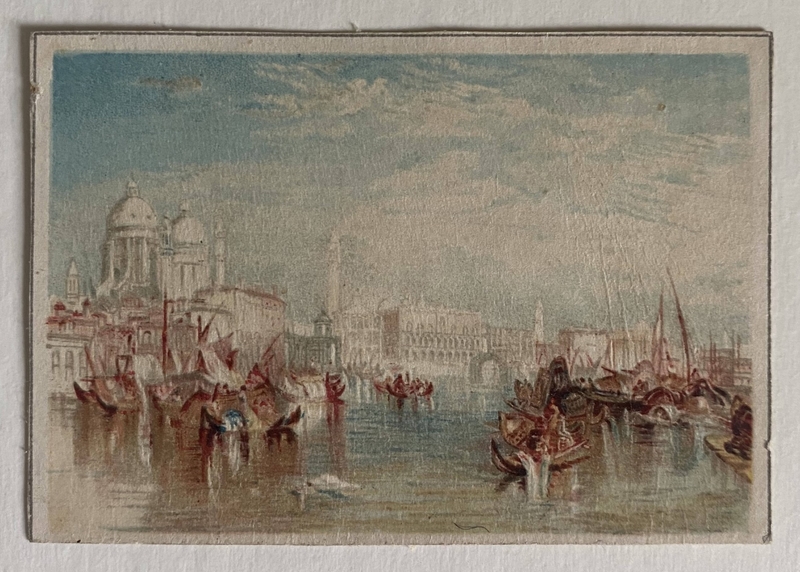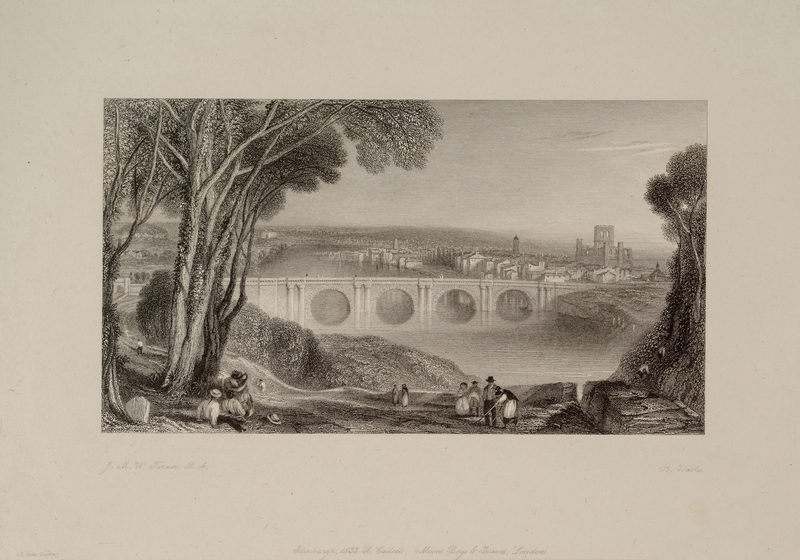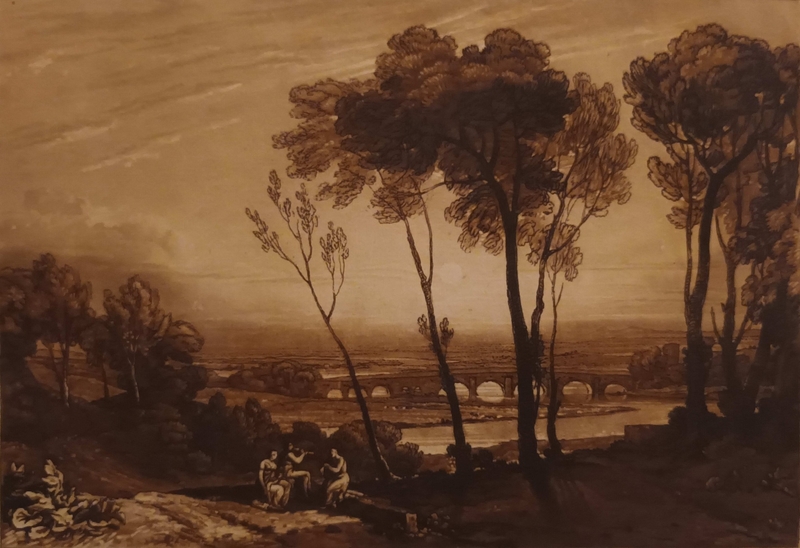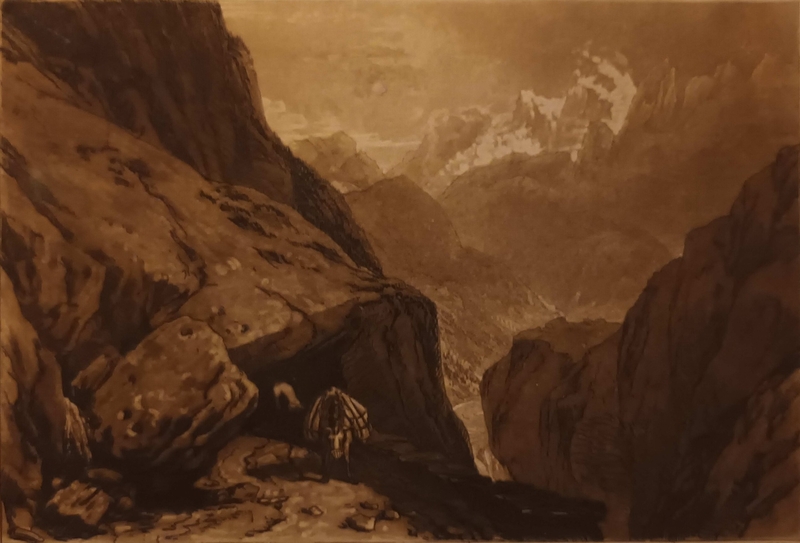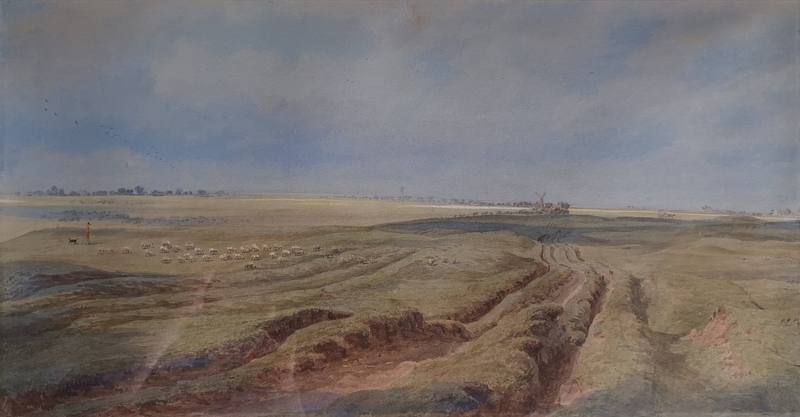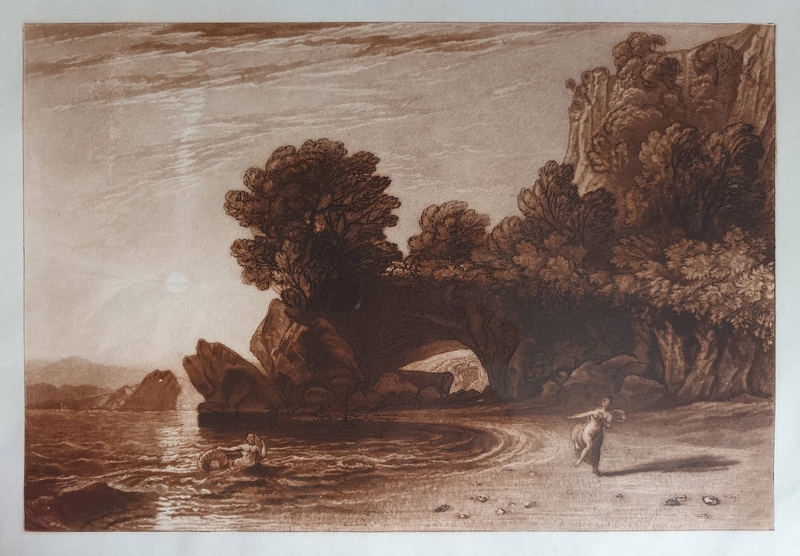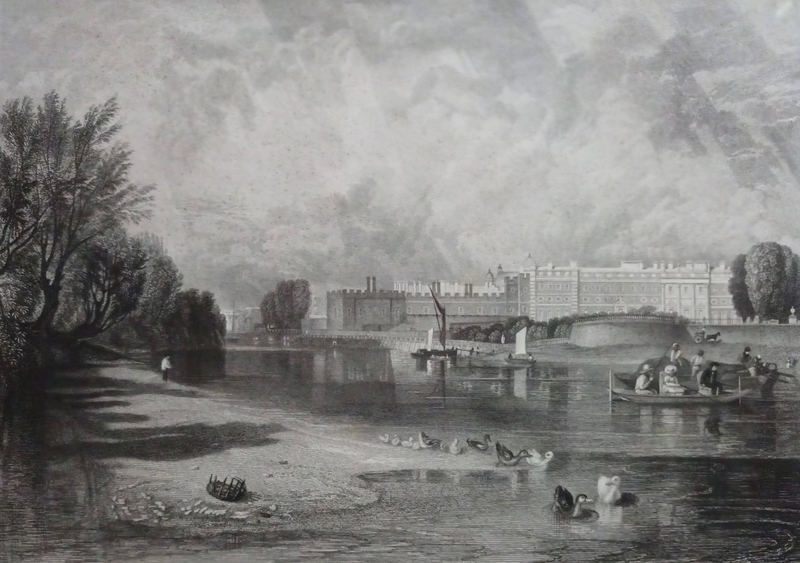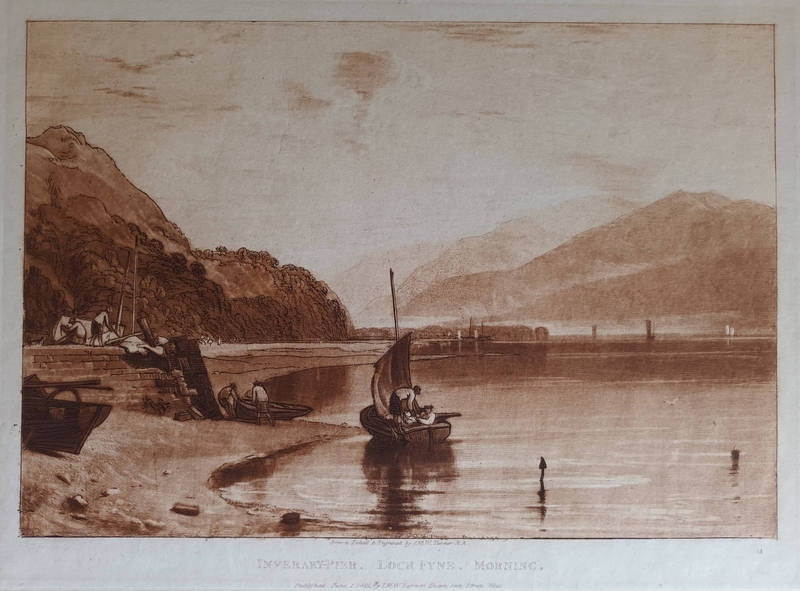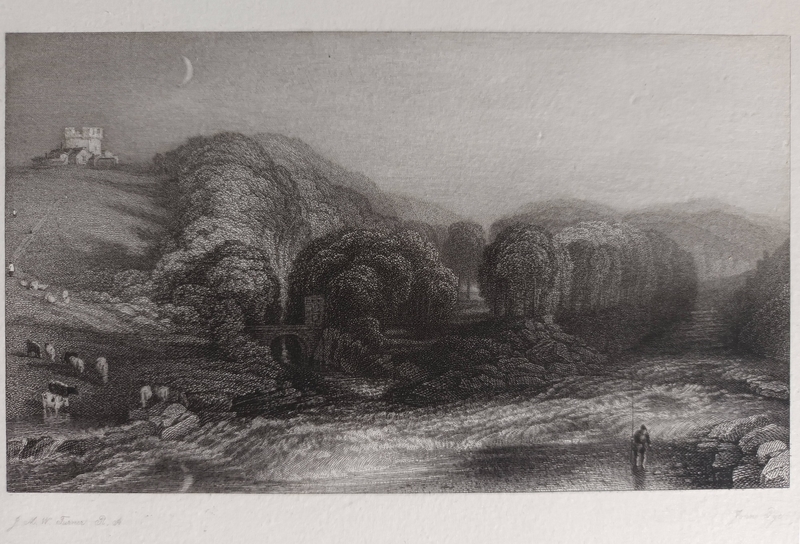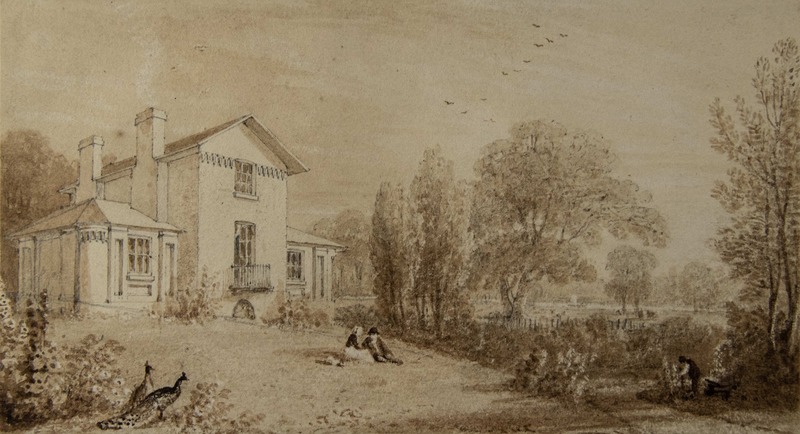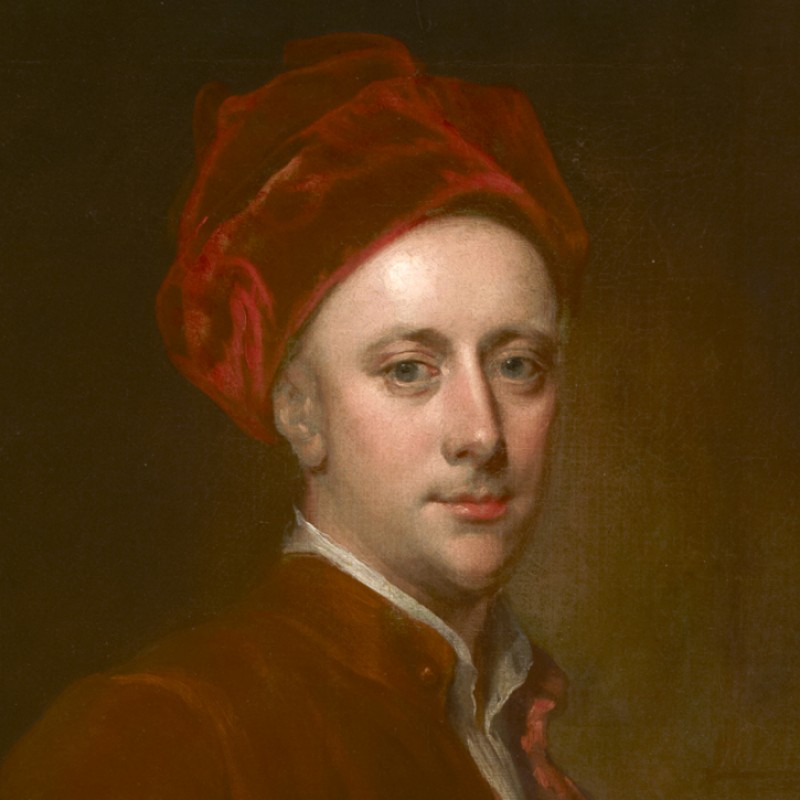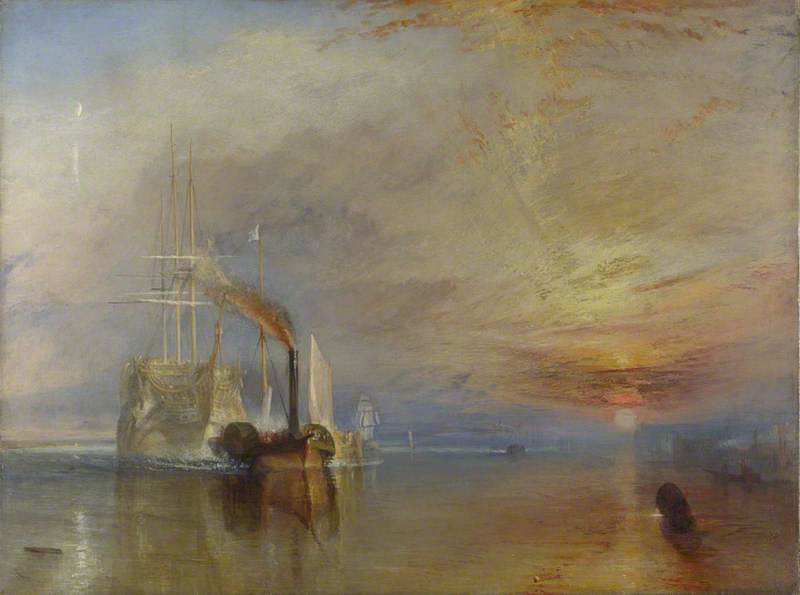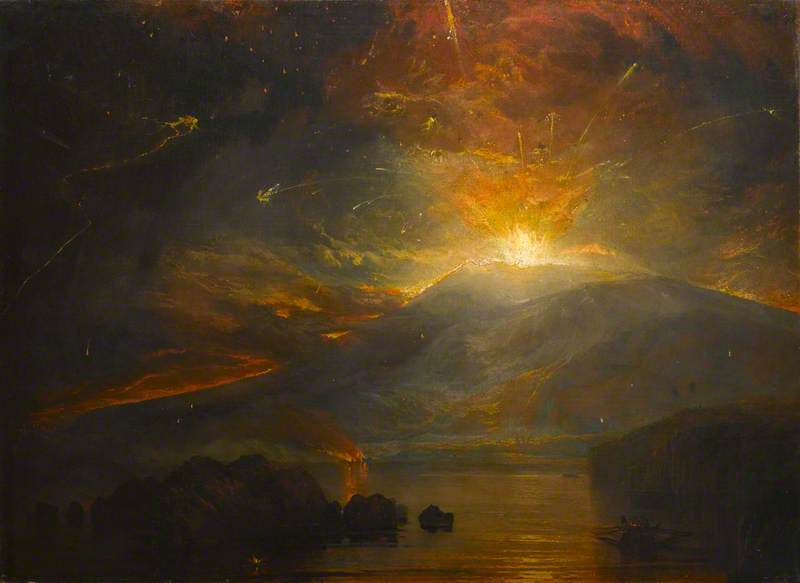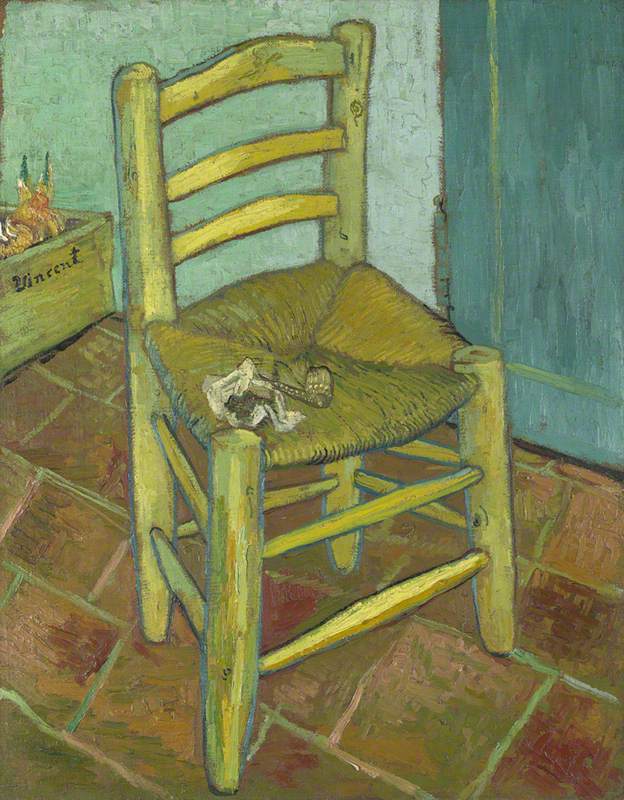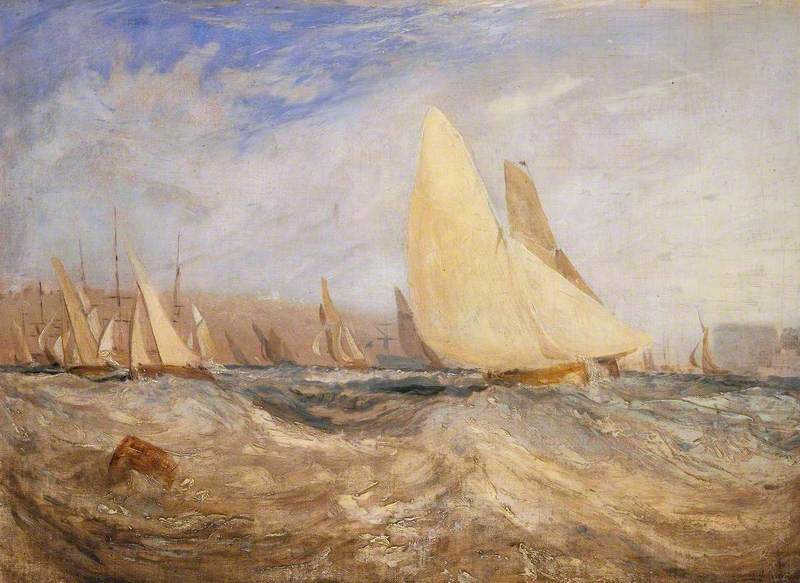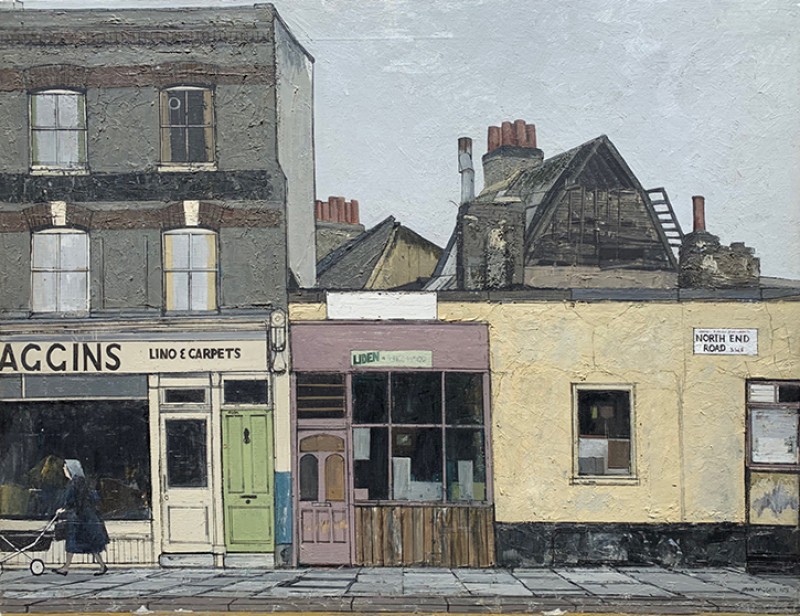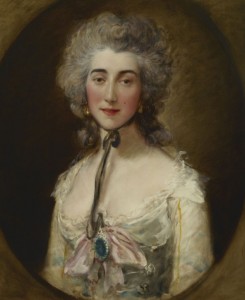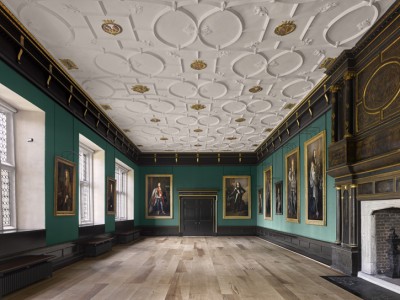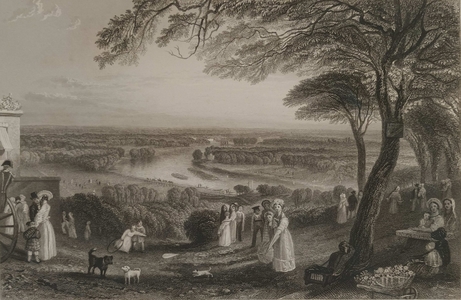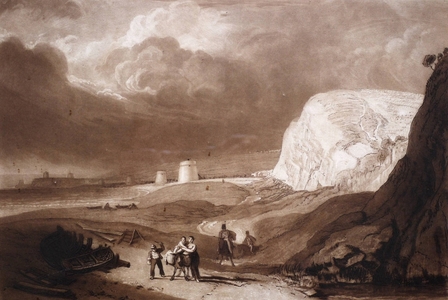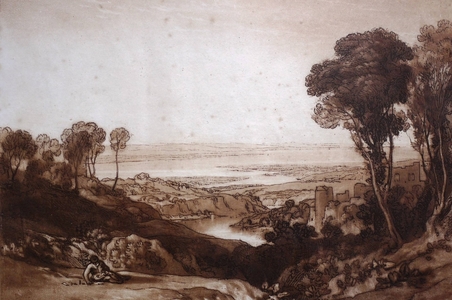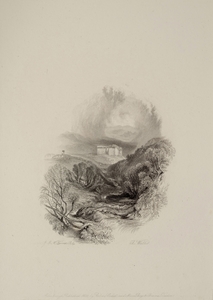In 1807, the great landscape artist J. M. W. Turner bought a two-acre plot of land between Twickenham and Richmond Bridge and soon started work on his country retreat.
Aged 32, Turner was both critically and financially successful and was recognised as a leading light in the British art world. He was well known and had spent a considerable amount of effort on building his practice. On his election to the Royal Academy, aged only 27, he was still the youngest person to become an Academician.
However, the house that he was to build and design was not a public place but rather a quiet retreat, away from the pressures of the London art world, to which he would invite friends and indulge in his passion for fishing.
Richmond from Twickenham Park
1822
Thomas Christopher Hofland (1777–1843) (after) and Charles Heath (1785–1848) 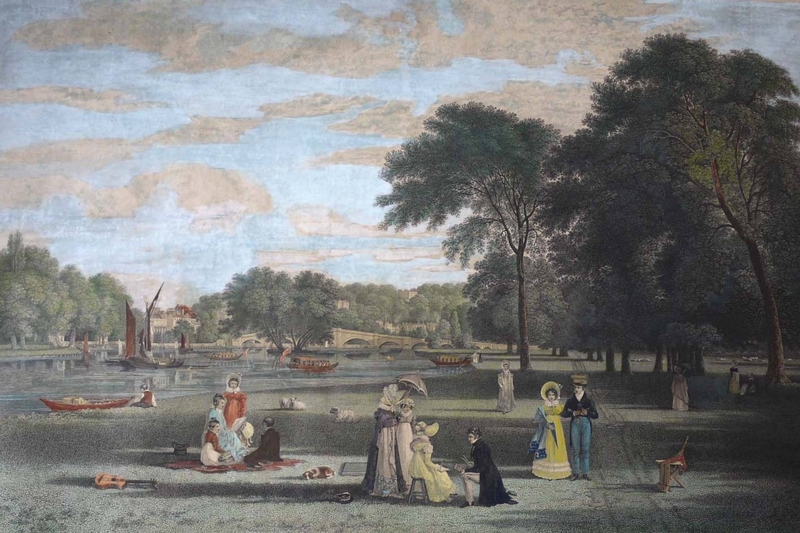
Turner was the son of a barber and wigmaker and was born in Maiden Lane in Covent Garden. As an adult, his primary residence, studio and gallery was on Queen Anne Street in Marylebone. Both these houses have, since Turner's death, been knocked down. This makes Turner's House the only house that can be visited that was lived in by the artist.
Furthermore, as Turner was his own architect at the house, it represents not only a place in which he lived but also something of his vision for ideal living. The house is as idiosyncratic as any of his paintings and allows visitors to see the personal and private side of the man – something that only his friends would have been able to do.
Turner sold the house in 1826 and therefore the current collection does not include items owned by him. Indeed, there are no images of the interior of the house to show us what he would have had on his walls. The collection at Turner's House includes many fine prints from his Liber Studiorum series and spans the breadth of his career, covering many of the themes and subjects to which he would return repeatedly.
J. M. W. Turner (1775–1851), RA, PP
1800
George Dance the younger (1741–1825) (after) and William Daniell (1769–1837) 
Dance's drawing of 1800, published by William Smith in 1827, shows Turner at the age of 25, the same age as his famous self-portrait. The drawing from which this print was made is reputed to be the only portrait for which he sat. Later artists wishing to capture Turner's likeness were forced to observe him surreptitiously. By the time the print was produced, he had become a full Academician and Professor of Perspective.
Young Turner is well-turned out, his hair probably dressed by his father, a barber and wigmaker. He is the essence of a successful young man. Apparently, Turner was sensitive about his nose which may explain why his self-portrait shows him facing out of the canvas.
Dance, who trained as an architect rather than as an artist, produced a series of drawings of RAs, most of which were made into prints, no doubt with the intention of publishing them.
This view is from the top of Richmond Hill, across the 'Matchless Vale of the Thames'. Turner knew and loved the Thames, having stayed in the Thames-side market town of Brentford as a boy. He rented houses along the Thames and, in the early 1800s embarked on a series of sketching journeys along the river. His purchase of land in Twickenham was undoubtedly influenced by his deep relationship to the river. He was also a lover of poetry, in particular the work of the Scottish poet James Thomson, who celebrated the view that Turner recreates.
This view of the Thames would appear in several of Turner's completed oils – sometimes posing as other rivers or as part of scenes of classical mythology. The throng of people enjoying the view include some wealthy enough to run a grand coach and footman, some middle-class strollers, children and a poor fruit seller, with lively dog encounters as well. Below on Petersham Meadows, a game of cricket is played. Visitors to Richmond Hill will see that the view remains largely unchanged.
Before the house was restored prior to being opened as a museum, it was rumoured that Turner had painted in the Drawing Room. It remains a room with wonderful natural light. However, analysis of samples taken from the original floorboards did not discover any traces of oil paint. If Turner worked here, it was in watercolours, pencils or on engravings.
Neither Turner, nor any of the artist friends that he invited to the house, seems to have recorded it. The exception was his friend William Havell.
Havell was born in Reading and painted many views along the Thames, including several of the Richmond area. This pencil-and-brown-wash drawing shows the house soon after it was completed. Havell clearly has 're-arranged' the landscape, showing the river much closer and in the wrong position than it really is. The reason for this must be that it was for inclusion in the engraver W. B. Cooke's Thames Scenery, and that Cooke wanted to justify this. The figures in the foreground have been described as Turner and a lady friend while the figure gardening on the right has been thought of as Turner's father. None of these attributions are confirmed.
Near Blair Atholl, Scotland
1811
Joseph Mallord William Turner (1775–1851) and William Say (1768–1834) 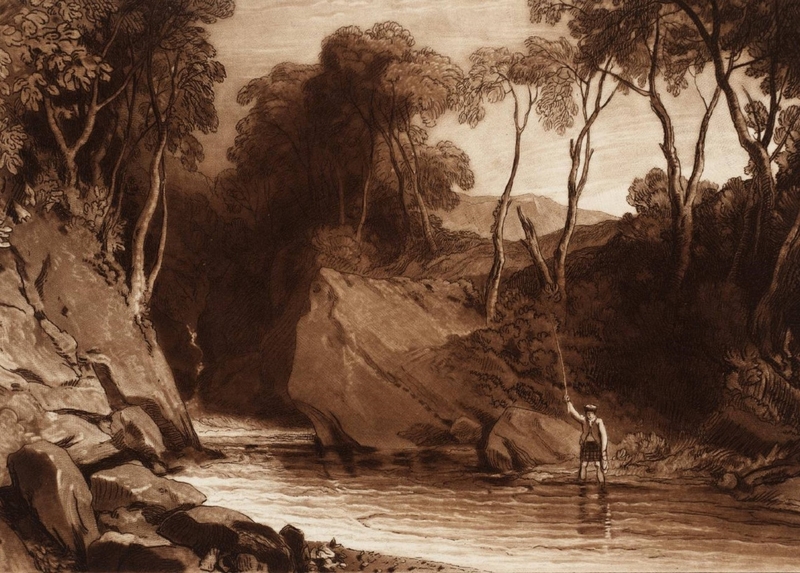
Turner made a number of tours to Scotland, beginning in the 1790s. This print derives from sketches made on his tour of 1801, enjoying the wild Scottish landscape.
Turner was an inveterate fisherman and spent long hours on the Thames with rods and sketchbooks. He fished with friends such as Sir John Soane, John Flaxman and Francis Chantry and in locations such as Petworth, Farnley Hall and Tabley Hall. It was at Tabley that the Earl of Leicester complained that he was spending more time fishing than painting. In the original garden at the house, Turner constructed a small pond into which he would put the catch of the day. The fish could then be retrieved at a later date.
Visit the Turner's House website to plan a visit, or to find out more about the house and its celebrated resident.
Matthew Morgan, Museum Director
